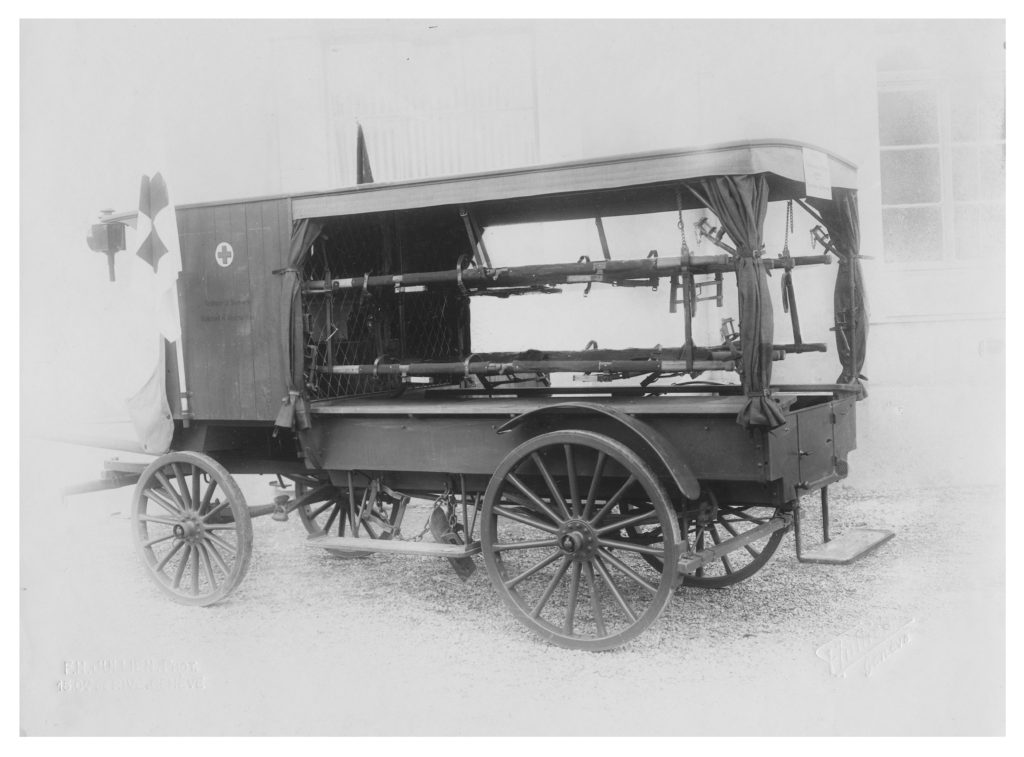This is part two in a series. For part one, see here. Part three will follow tomorrow.
Structuring knowledge: If the Maussian concept can help to see social spaces with dynamic and asymmetric power relations, theories developed by Foucault can sharpen the understanding of the institutionalization of knowledge as a strategy of governance. In the field of humanitarianism the example is the standardization and dissemination of knowledge.[1] Many books have been written on missions and operations, but little research has been done on the development of the aid techniques that structured humanitarian thinking. However, there are plenty of historical sources from the interwar years on exchanges of knowledge about aid techniques. Such techniques were not only discussed by experts, government officials, or diplomats in international study groups and conferences, they were also published in journals like the International Review of the Red Cross. These reports and resolutions filled literally thousands of pages produced during the 1920s and 30s. As Foucault showed in his work on prisoners, a form of microphysics of power lies in the establishment of rules and norms for the delinquent.[2] If the establishment of power gathers momentum in the invisible regulation of fields of knowledge, surely these study groups and their proceedings during the 1930s can help bring to light some part of these processes in the humanitarian context. Two examples:
Beginning in 1925, the ICRC had an affiliated commission on the standardization of medical equipment that met annually. Its members were high-ranking representatives of medical services in armies whose governments had signed the Geneva Conventions. In its statutes it laid down four aims: to study how medical equipment can be developed and best used; to propose standards for medical equipment to governments; to study these questions at the request of a particular government; and to work in close collaboration with the permanent committee for the Congrès de medecine et de pharmacie militaires.[3] During much of the 19th century the ICRC was preoccupied with making clear why international efforts are needed to humanize war. In the interwar period, it became equally interested in the question of exactly how assistance should be provided. The Commission went into great detail on these questions, as a resolution dating from 1935 shows:
Les appareils de contention provisoire pour le transport primaire des blessés atteints de fracture doivent réunir en principe les caractères généraux ci-après:
- être aussi légers que possible sans que cela nuise a leur solidité ;
- pouvoir être facilement transportés en vrac et en assez grande quantité avec un encombrement minimum ; (…)
Parmi les types d’appareils qu’elle a examinés, la Commission retient et signale comme préférables : A. Membre supérieur: a) L’écharpe, I’attelle simple, les gaines en store préparé (transports à courte distance, fractures se présentant dans des conditions favorables) pour Service de santé regimentaire et formations sanitaires de campagne. (…)[4]
Knowledge about aid material was structured, listed, and ranked. There was a certain competition among participating countries about which medical service was best equipped to help. The commission, being well aware of this, tried to boost this sense further by running public competitions on the best material. These developments show how, far from being the fruitless efforts of a handful of experts, such an exchange of knowledge had begun to change the mechanisms of humanitarian development.

Copyright Photothèque CICR (DR)/JULLIEN F.H. V-P-HIST-E-02639. A medical transport as used by Swiss army and exhibited in an ICRC competition 1925.
The second example shows how international norms could lead to strict national dispositions not only by passing laws but also by assembling knowledge. Within a period of ten years, norms prohibiting the use of poisonous gas in wars were translated into a regime of rules and norms that structured civilian behaviour in everyday life in Switzerland.[5] The Geneva protocol (Protocol for the Prohibition of the Use in War of Asphyxiating, Poisonous or other Gases, and of Bacteriological Methods of Warfare), itself had faced some criticism when it passed in 1925 and was signed by 65 states. It had laid down rules on the production, storage, or transfer of gas and simply prohibited its usage. In 1928, the Swiss government appointed a national commission to study the extent to which Switzerland needs further protection. The composition of the commission was proposed by the ICRC, and its members were drawn from the Swiss Red Cross and the government. Finally, in 1934, the government followed the recommendations of the commission, issuing directives on how civilians should protect themselves from gas attacks. More decrees followed in the late 1930s. Throughout this process of development of national, cantonal, and municipal legislation, the ICRC and its affiliated commissions acted as experts and knowledge brokers to signatory states. They tried to put norms on national political agendas by reassembling and pooling complicated knowledge. This behavior can be interpreted as a modernization of humanitarianism. The result in countries like Switzerland was a fine-grained network of local rules, structuring cellar rooms in which civilians should take refuge from gas attacks and defining simple aspects of everyday life, such as the equipment that civilians were required by law to store in their basement. Studies on empires of humanitarianism—so I claim—should explore these aid techniques in order to extend our knowledge of humanitarian spaces.
[1] See also Alexander C.T. Geppert et al.,“Verräumlichung. Kommunikative Praktiken in historischer Perspektive, 1840-1930”, in Ortsgespräche. Raum und Kommunikation im 19. und 20. Jahrhundert, ed. Alexander C.T. Geppert et al (2005), 48.
[2] Michel Foucault, Überwachen und Strafen. Die Geburt des Gefängnisses (Frankfurt: 2009), 12; and Philipp Sarasin, Michel Foucault zur Einführung (Hamburg: 2005), 131-145.
[3] “Règlement de la Commission internationale permanente d’études du materiel sanitaire” Revue internationale de la Croix-Rouge 204, no. 17 (1935): 912-913.
[4] “Conclusion de la Commission” Revue internationale de la Croix-Rouge 204, no. 17 (1935): 912-913.
[5] “Botschaft des Bundesrates vom 4. Juni 1934 an die Bundesversammlung betreffend den passiven Luftschutz der Zivilbevölkerung,” Bundesblatt 23, no. 2 (1934):383-397.

